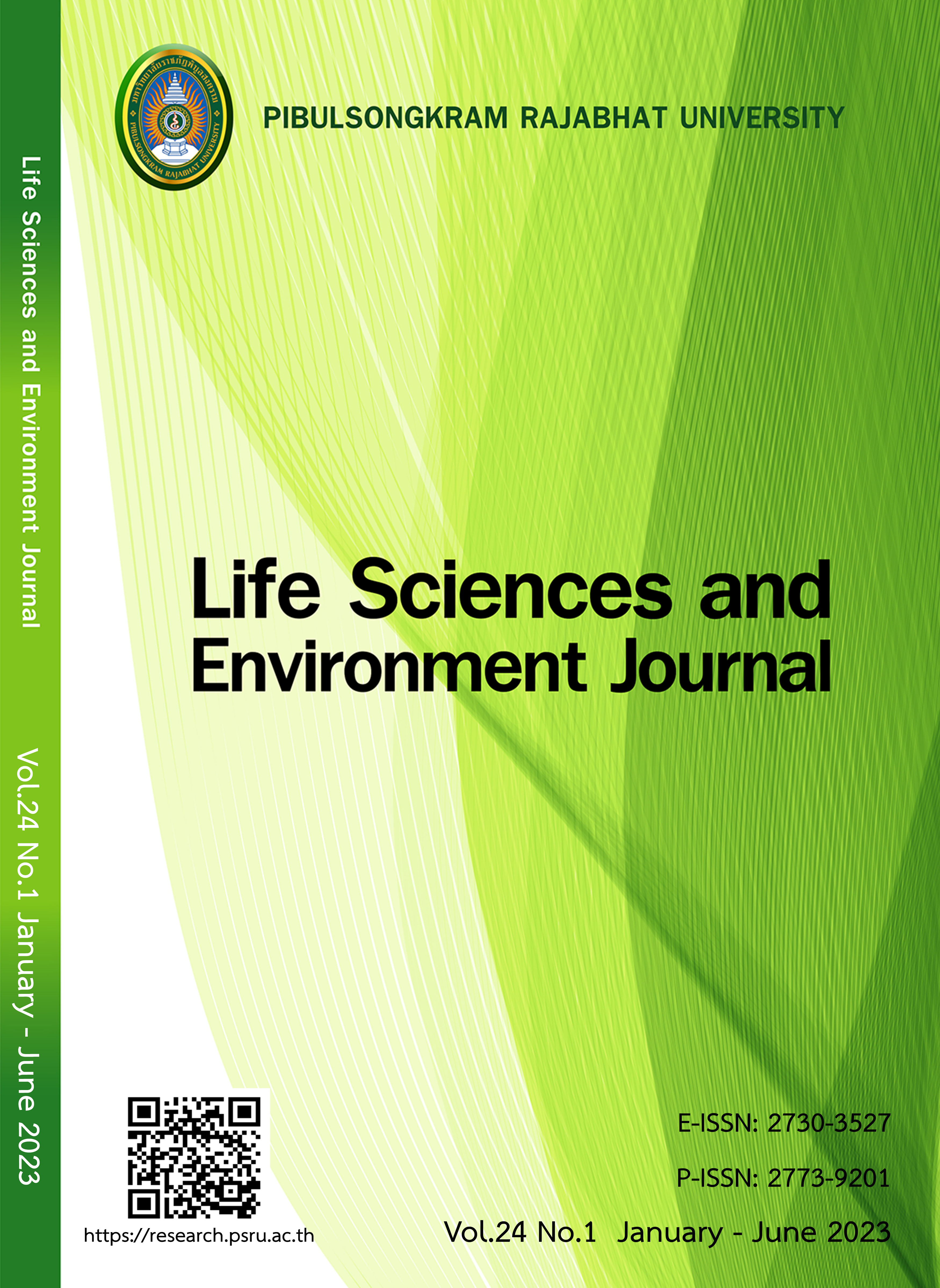THE EFFICIENCY OF DRYING PISANG AWAK BANANAS WITH THE HYBRID METHOD AND THE BREAKEVEN POINT OF ENGINEERING ECONOMICS
DOI:
https://doi.org/10.14456/lsej.2023.19Keywords:
Pisang awak, Hybrid method, Dried bananas, Breakeven point analysisAbstract
This research objectives were to find out the efficiency of making dried bananas with hybrid methods; solar drying and hot air drying and to compare the costs of using the traditional method and hybrid methods using breakeven analysis. Pisang awak bananas are used for drying with a hybrid method; drying in the solar dome and hot-air oven. Pisang awak banana was grown in Suan Phueng district, Ratchaburi, harvested in stage 2, and kept for proper ripeness at stage 6. The experiment used 10 clusters of Pisang awak bananas sliced vertically into 688 pieces. The drying process started in a solar drying dome for 18 and 36 hours at 42oC and went on drying with hot-air ovens at 35oC and 40oC for 18 and 2 hours, respectively. The indicators used to measure the efficiency and quality of dried bananas were the percentage of moisture, color index, firmness, and percentage of shrinkage, including breakeven analysis. The results revealed that the most appropriate way to dry Pisang awak bananas was in the solar dome at 42oC for 18 hours, and a hot-air oven at 35oC for 18 hours. Dried bananas were 19.54%
of moisture and were under Thai Industrial Standards of dried banana products (less than 21%). The color index results were 42.65, 6.23, and 22.32 of L*, a, and b*, respectively that the color of dried banana was golden brown with soft texture; 412±86.14b g. of firmness. The percentage of shrinkage was relatively low because of drying with low temperatures. Moreover, the breakeven analysis showed the producer could gain a profit after selling 5,832 pieces or 584 jars of 10-piece dried bananas for 7 Baht a piece. The hybrid method helps reduce drying time by 78.57% from 168 hours of the traditional drying method.
References
Amdee N. Engineering economy. 3rd ed. Ratchaburi: Mubanchombueng Rajabhat University; 2022.
Athiwittayaporn S. The Study of optimum drying time of dried banana using the combination methods of air drying and vacuum microwave drying. Faculty of Agricultural Industry. Bangkok: Kasetsart University; 2008.
Balasubramanian S. Process engineering economics. Department of chemical engineering, SRM University. 2018 Available at: http://balasubramanian.yolasite.com/resources/Introduction%20 Economics %20Lecture%202%201e%20.pdf Accessed December 13, 2022.
Boonchouy, N. The Study Cost and Returns of Planing Cultivated Banana in Tha Yang District, Phetchaburi Province. Veridian E-Journal, Silpakorn University 2017;10(1):1884-1894.
Centre for Agricultural Information. Annual Report of 2020.Bangkok: The Ministry of Agriculture and Cooperatives; 2021.
Clear C. Break-Even Analysis – Definition, Formula & Examples. 2021. Available at: https://cleartax. in/s/break-even-analysis; Accessed December 13, 2022.
Crichton R. Pisang Awak. 2020. Available at: https://www.promusa/Pisang+Awak#Local_names; Accessed December 13, 2022.
Dongbang W, Nuantong W. Investigation of mathematical modeling for banana slices drying using hot air technique. Naresuan University Journal: Science and Technology 2020;(28)3:79-87.
Musikachai T. Drying Strategy of Kluai Leb Mu Nang and Kluai Khai with Energy Heat Source: LPG. Faculty of Engineering, Songkhla: Prince of Songkhla University; 2018.
Nabnean S, Nimnuan P, Sanorchit O. Solar drying of banana using household solar dryer. Journal of Knowledge Exchange 2020; 19-31.
Nikhila C. Essay on break even analysis, Engineering economics. Business Management Ideas. 2019. Available at: https://www.businessmanagementideas.com/essays/essay-on-break-even-analysis-engineering-economics/6908. Accessed December 13, 2022.
Piwsaoad J, Phusampao C. Greenhouse solar dryer for drying life andrographis paniculata herb. Sciences and Environment Journal 2022;23(2):324-333.
Piwsaoad J. Greenhouse Solal Dryer with LPG Gas Burner for Drying Bananas. Life Sciences and Environment Journal 2023;24(1):53-73.
Pornchalermpong P, Rattanapanon N. Climacteric fruits. Food network solution. (2021). Available at: https://shorturl.asia/hZKNi. Accessed December 13, 2022.
Tantiwattanodom C, Amdee N, Tonglim T, Sonsiri A. Optimum drying times of dried bananas with hybrid methods. Silpakorn International Conference on Total Art and Science 2021 (SICTAS 2021) 2021: 253-257.
Thai Industrial Standards Institute. Standards of drying banana products. Bangkok: MIK Press; 1985.
Thai Industrial Standards Institute. Standards of drying banana products. Bangkok: MIK Press; 2003.
Thompson AK, Supapvanich S, Sirison J. Banana Ripening. Science and Technology. SpringerBriefs in Food, Health, and Nutrition; 2019.
Upawang N. Nutrition of pisang awak banana and its usefulness. Region Health Office 6, Chonburi Province; 2019.
Veroustraete F. Can ethylene, a simple gaseous hydrocarbon, be considered as a plant hormone or as an ozone antagonist? ReserchGate, Redstar-CV&M Open Access Science Publishing; 2016: 4-11.
Downloads
Published
How to Cite
Issue
Section
License
Copyright (c) 2023 Life Sciences and Environment Journal

This work is licensed under a Creative Commons Attribution-NonCommercial-NoDerivatives 4.0 International License.
Each article is copyrighted © by its author(s) and is published under license from the author(s).










